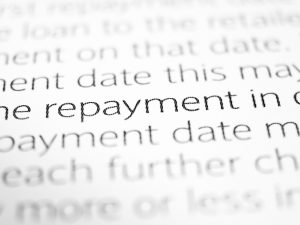
Last time we introduced some of the repayment plans that are available for people with student loan debt. These included the Standard Repayment Plan, the Graduated Repayment Plan, and the Extended Repayment Plan. While these plans do offer some choice about how you can pay your loans back, they may also be unrealistic for individuals with low income and high debt.
However, those with low income need not fret. The federal government also offers income-based repayment plans that provides some relief to individuals who qualify. I’ll discuss the various plans below, but it’s important to research them yourself to figure out what works best for you personally.
Pay As You Earn Repayment Plan
The Pay As You Earn Repayment Plan (PAYE) is one of four income-driven plans the office of Federal Student Aid offers. This means that your payments will depend on your income and family size. Those who select the PAYE plan will generally pay 10 percent of their discretionary income each month, however they will never pay more than the monthly payments under the Standard Repayment Plan. The payments are recalculated each year based on changes in income and family size. If you are married and you file a joint tax return, then your spouse’s income and loan debt will also be considered.
The most important aspect of the income driven plans is that all remaining loan debt will be forgiven at the end of the repayment period. For the PAYE plan, this period is 20 years. There are multiple conditions you must meet to be eligible for this plan. You must have been a new borrower on or after Oct. 1, 2007, you must have received a disbursement of a Direct Loan on or after Oct. 1, 2011, and you must have a high debt relative to your income.
Like the extended plan, you’ll probably end up paying more over the length of the repayment period. Also, you may have to pay income tax on any debt that is forgiven.
Revised Pay As You Earn Repayment Plan
The Revised Pay As You Earn Repayment Plan (REPAYE) is very similar to the PAYE plan with some important distinctions. Like the PAYE plan, the REPAYE plan monthly payments are generally 10 percent of discretionary income, depending on the amount of income and family size. But if you are married, your spouse’s income and loan debt will be considered regardless of how your taxes are filed. Also, there is no guarantee that you won’t pay more than the 10-year standard plan monthly payment. Another difference is that the REPAYE plan allows for a 25-year repayment period if the borrower also received loans for graduate or professional school.
Income-Based Repayment Plan
The income-based plan is almost the same as the PAYE plan except for some small differences. The monthly payment can vary between 10 and 15 percent of discretionary income and the repayment period can be 25 years depending on when you received your loan.
Income-Contingent Repayment Plan
This is another income-driven plan with the same stipulations as the PAYE plan, expect for the method for determining monthly payment amounts. Under the income-contingent plan your payment will either be (1) 20 percent of your discretionary income, or (2) the amount you would pay with a fixed payment over 12 years, adjusted to income. Whichever of these two options would be cheaper for you is what you would pay. Like the other income-driven plans, your outstanding loan balance will be forgiven after 25 years of monthly payments.
Income-Sensitive Repayment Plan
Finally, we come to our last repayment plan, the income-sensitive plan. Under this plan, your monthly payment will depend on your annual income and you will pay the entirety of the loan within 15 years.
Public Service Loan Forgiveness Program
Some individuals that work for a government or non-profit organization may be eligible to have their loans forgiven through the Public Service Loan Forgiveness Program. If you work full-time for a qualifying employer and have made 120 payments under a qualifying repayment plan, then you can have your loan debt forgiven. The repayment plans that qualify for this program are any of the income-driven plans listed above: the PAYE Plan, the REPAYE plan, the Income-Based Repayment Plan, and the Income-Contingent Repayment plan.
Which plan is right for you?
We’ve covered several different payment plans so hopefully you’ll feel a little better about tackling that student loan debt. If not, that’s okay, the office of Federal Student Aid has an abundance of resources for you. One such resource is their repayment estimator. By providing some information about your loans, this tool can help you figure out which of these plans you qualify for and works best for you.
While student loans can feel like an insurmountable burden, they are a fact of life that many of us must become well-acquainted with. By reading up on the options available to you, you can be better prepared to make the right decision for your financial future.
If you thought this post was helpful, subscribe to our blog by providing your information to the right-hand side of the page. For more content, follow us on Facebook @nextfinancial and find us on LinkedIn at NEXT Financial Group, Inc.
https://www.forbes.com/sites/zackfriedman/2018/06/13/student-loan-debt-statistics-2018/#4cfc2c867310
https://studentaid.ed.gov/sa/repay-loans/understand/plans/income-driven
https://www.marketwatch.com/story/student-debt-just-hit-15-trillion-2018-05-08






